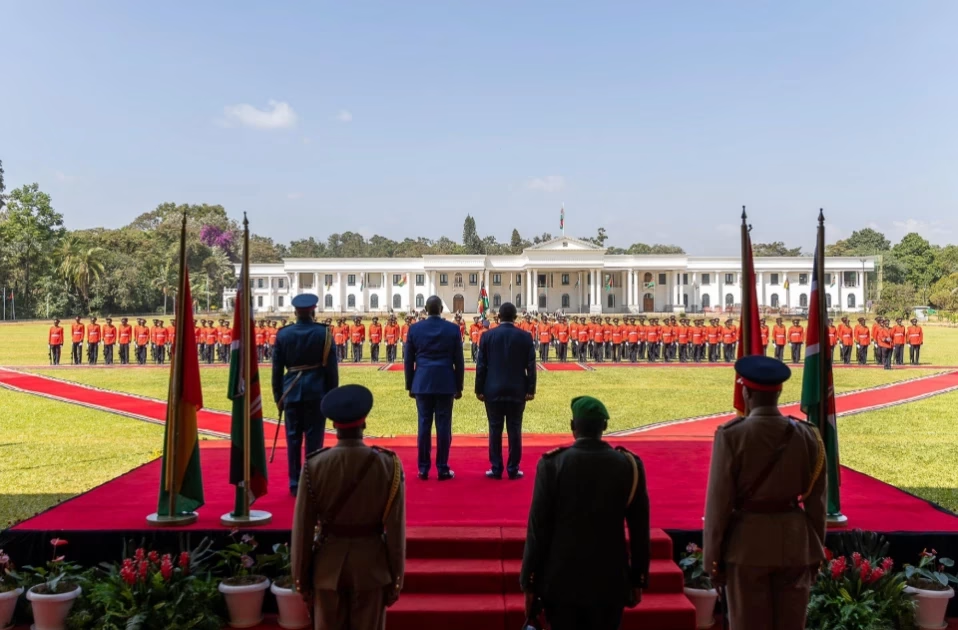A recent report by Kenya’s Controller of Budget (CoB), Dr. Margaret Nyakang’o, has exposed that the State House received a staggering Sh3.6 billion from the National Treasury between May 14 and June 24, 2025, for fuel, travel, and hospitality expenses. This eye-popping expenditure, occurring in just 42 days, has sparked widespread concern about fiscal discipline in President William Ruto’s administration, especially in light of Kenya’s economic challenges and promises of austerity. Let’s unpack this issue, explore its implications, and question whether this spending aligns with the nation’s priorities.

According to the CoB’s report, the Sh3.6 billion was allocated to cover shortfalls in domestic travel, hospitality supplies, fuel, and vehicle maintenance at State House. Here’s a closer look at the disbursements:
- May 14, 2025: Treasury Cabinet Secretary John Mbadi approved a Sh1.5 billion withdrawal to address shortfalls in domestic travel, hospitality, fuel, and vehicle maintenance. The following day, Dr. Nyakang’o authorized Sh358.16 million of this amount.
- Subsequent Approvals: Between May 21 and May 28, the CoB greenlit additional tranches of Sh263.46 million, Sh626.5 million, and Sh250 million, totaling Sh2.3 billion of the Sh3.6 billion approved by the Treasury.
- June 13, 2025: The Treasury approved another Sh850 million for similar expenses, with the CoB authorizing Sh738 million in three tranches between June 17 and June 24.
- Unapproved Spending: Notably, a Sh1.25 billion withdrawal approved by the Treasury on May 15 was not submitted to the CoB for approval, raising red flags about transparency and adherence to legal protocols
This spending was justified under Article 223 of the Kenyan Constitution, which allows the government to allocate funds for unforeseen emergencies not included in Parliament-approved budgets. However, the nature of these expenses—domestic travel, hospitality, and vehicle maintenance—has left many questioning whether they truly qualify as “emergencies.”
The timing of this expenditure is particularly contentious. Kenya is grappling with a cash crunch exacerbated by the withdrawal of the 2024 Finance Bill, which proposed Sh345 billion in new taxes but was scrapped after deadly protests. The government announced austerity measures to curb non-essential spending, specifically targeting lavish allowances, travel, and taxpayer-funded motoring to rein in the fiscal deficit. Yet, the State House’s Sh3.6 billion spending spree in just six weeks seems to fly in the face of these pledges.
To put this into perspective, the Sh3.6 billion spent in 42 days is a significant chunk of the State House’s revised budget for the entire fiscal year, which jumped from Sh4.3 billion to Sh8.1 billion. This included Sh732.2 million for domestic travel, Sh700 million for salaries and perks, and Sh312.4 million for car maintenance, among other expenses. The fact that such a large sum was spent in such a short period raises questions about planning and fiscal responsibility, especially when essential services like education and healthcare remain underfunded.
Kenyans have taken to social media to express their frustration, with many labeling the spending as “daylight robbery.” Netizens have pointed out the stark contrast between the government’s lavish spending and the lack of funds for critical sectors like school capitation. One X user remarked, “I don’t think most of us know how much 1B is. You can literally spend 100k every single day for 27 years and still won’t exhaust KSh 1b.” Another quipped, “By the time he is finished with Kenya, we shall remain with only cobwebs to clean at the treasury.”
These sentiments reflect growing public disillusionment with the Kenya Kwanza administration, which campaigned on promises of fiscal prudence and prioritizing the needs of ordinary citizens. The fact that the State House spent Sh817 million on printing services alone—equating to Sh68 million monthly or Sh2.2 million daily—further fuels perceptions of misplaced priorities.
This isn’t the first time the State House has come under scrutiny for its spending habits. In the first nine months of the 2024/2025 financial year, the Executive Office of the President spent Sh3 billion, with Sh1.4 billion on domestic travel, Sh298 million on foreign travel, Sh1.2 billion on hospitality, and Sh408 million on fuel. Additionally, Sh399 million has been spent on refurbishing State House, with total renovation costs since 2022 reaching Sh1.17 billion.
The CoB has repeatedly flagged irregularities, noting that Sh17.4 billion spent during the financial year was not approved by her office, violating legal requirements. Earlier in 2024, the CoB rejected Sh47 billion in emergency spending requests, including Sh400 million for vehicle purchases and Sh700 million for a presidential dais at State House, deeming them non-urgent. These rejections highlight a pattern of attempting to bypass budgetary controls, with the State House often at the center of such controversies.
As Kenya navigates economic hardship, the government’s spending decisions are under intense scrutiny. The Sh3.6 billion spent by State House in 42 days is not just a number—it represents resources that could have funded schools, hospitals, or infrastructure projects to benefit ordinary citizens. Instead, it’s been channeled into travel, fuel, and hospitality, leaving many to wonder whether the administration is truly committed to its austerity promises. The public’s anger, as seen on platforms like X, is a wake-up call. It’s time for the government to align its actions with its rhetoric, prioritize the needs of Kenyans, and restore faith in fiscal governance. Until then, the State House’s spending spree will remain a glaring symbol of misplaced priorities in a nation crying out for change.